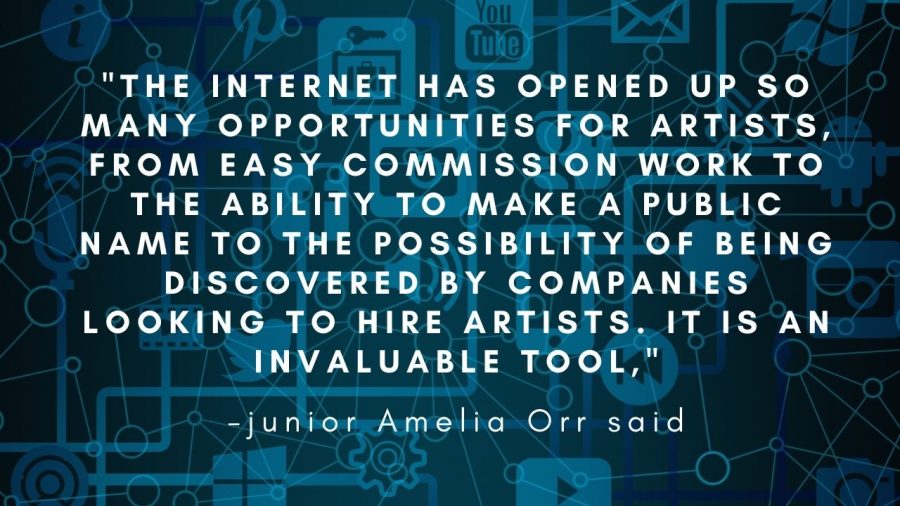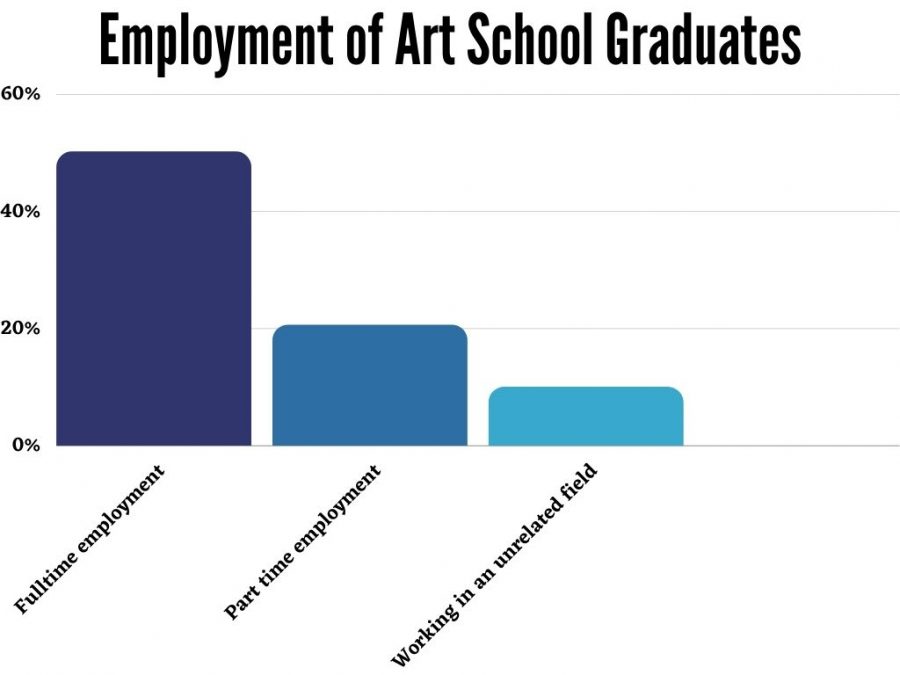Your donation will support the student journalists of North Cobb High School. Your contribution will allow us to purchase equipment and cover our annual website hosting costs.
The value of art school
April 16, 2021
Any student preparing to attend college undoubtedly knows the story of the hopeless art student. They set off to college with hopes of furthering their own education and understanding of their craft only to come face to face with “reality”; difficulty finding jobs, making a liveable wage, and no hope of repaying the tens of thousands of dollars in debt they accumulated throughout their four years at university. The tale remains a staple amongst the vast collection of anecdotes and diatribes used by guidance counselors and parents alike with the hopes of guiding a lost student. However, this story may not hold as much ground today as it did twenty years ago thanks to the rise of computer technology and the internet.
Online shopping became a major part of life for countless people ever since Jeff Bezos and his wife started selling books on Amazon, and with recent world events locking the majority of the population in their homes, consumers found themselves with even fewer options. Online shopping remains the most convenient and accessible way for a person to shop, and has changed the way businesses operate across the globe. Small business pop up now more than ever thanks to the ease of the internet. With this rise in aspiring entrepreneurs a large facet of the business world reveals itself to those who frequently overlook the connection between artistry and industry: graphic design.

Graphic design plays an undeniably important role in the way consumers interact with businesses. The field covers everything from logo designs and website layouts to animation and video editing, all of which provide countless areas for one to specialize in. While the career does lean more towards the business side of the spectrum, it undoubtedly requires an artist’s eye, and with the seemingly endless demand for them and an average salary of $47K a year, the graphic designer would definitely not find themselves falling prey to the starving artist stereotype.
“Well I think it’s a great career. There’s so much to do with that degree because people always need a design for their products, t-shirts, logos, etc so it’s a job that is always in demand. It’s also a career where you have to be extremely versatile and good with coming up with good solutions and thinking outside of the box,” Savannah College of Art and Design (SCAD) student Luis Ponce said.
Well, what about the actual art people think about when someone mentions art school? While a student looking to make their money off of art shows and displays in museums may find themselves disappointed to find out that the career requires an absurd amount of luck to get into and does not rely on skill alone. The number of careers in which an artist who wishes to express themselves and show off their skills remains countless. Those who desire a career in fields such as those in animation, scientific illustration, interior design, and the list goes on, can get a jumpstart in the industry by acquiring a four year art degree.

While the internet provides a wonderful platform from which artists can create independently, and history finds itself full of famous creators who never came within five hundred feet of art school, the fact remains that these people make up a negligible percentage of those that attempt to find success in art. To find stability in an artistic field, a degree in the art of one’s choice becomes invaluable. One will find that the skills from attending an art school or simply taking a handful of art classes can see application in various other fields such as communication, education, and social interaction.
“Art helps learners develop creative problem solving skills. It also helps learners connect difficult life concepts into visual understanding, and provides challenges which allow for creative growth,” NC art teacher Mrs. Arana said.
Art school allows students to explore mediums they would otherwise never try due to lack of resources or interest. A painter could find that they possess a passion for photography, or a visual effects artist may discover their love for sculpting. The opportunities and connections art school provides its students become seemingly endless when one realizes that their classmates will soon make up the industry they want to enter.
“You get to learn a lot of skills you usually wouldn’t encounter. And the something that is definitely valuable when it comes to a degree in the arts in general is that you get to meet and work with the people you’re going to be working with in the future, so you basically make your professional connections and future collaborators from day one,” Ponce said.
Any artist knows that the process of creating art takes time, effort, and forethought. By pursuing a fine arts degree a student can learn how to not only speed up their creative process, but also how they can enhance it and further develop their own ideas and garner a set of generally applicable problem solving skills. Fine arts courses require rigorous study and they demand the artist’s full attention and dedication, but through these studies and practices the artist learns how to most effectively observe the world around them and how to apply those observations in their work. While an artist will learn this skill over a long period of time without the assistance of any formal art education, art school provides a structured environment in which they can hone this ability at a considerably faster rate as well as build upon other aspects of art they may otherwise never practice.

So despite the commonly repeated story that an art degree will result in four wasted years, art school can serve as a wonderful path for an aspiring artist to take to reach their goals. While not all artists necessarily need a degree, the ones who pursue one gain access to numerous advantages and opportunities they would otherwise never come across. During their time chasing after an art major, students will learn observation and communication skills that can translate into any field, as well as acquire a wider world view. The skills artists learn, the experience they gain and the connections they form in their personal lives and future professional lives serve as plenty of reasons for consideration by an artist looking to take a next step in their career.
